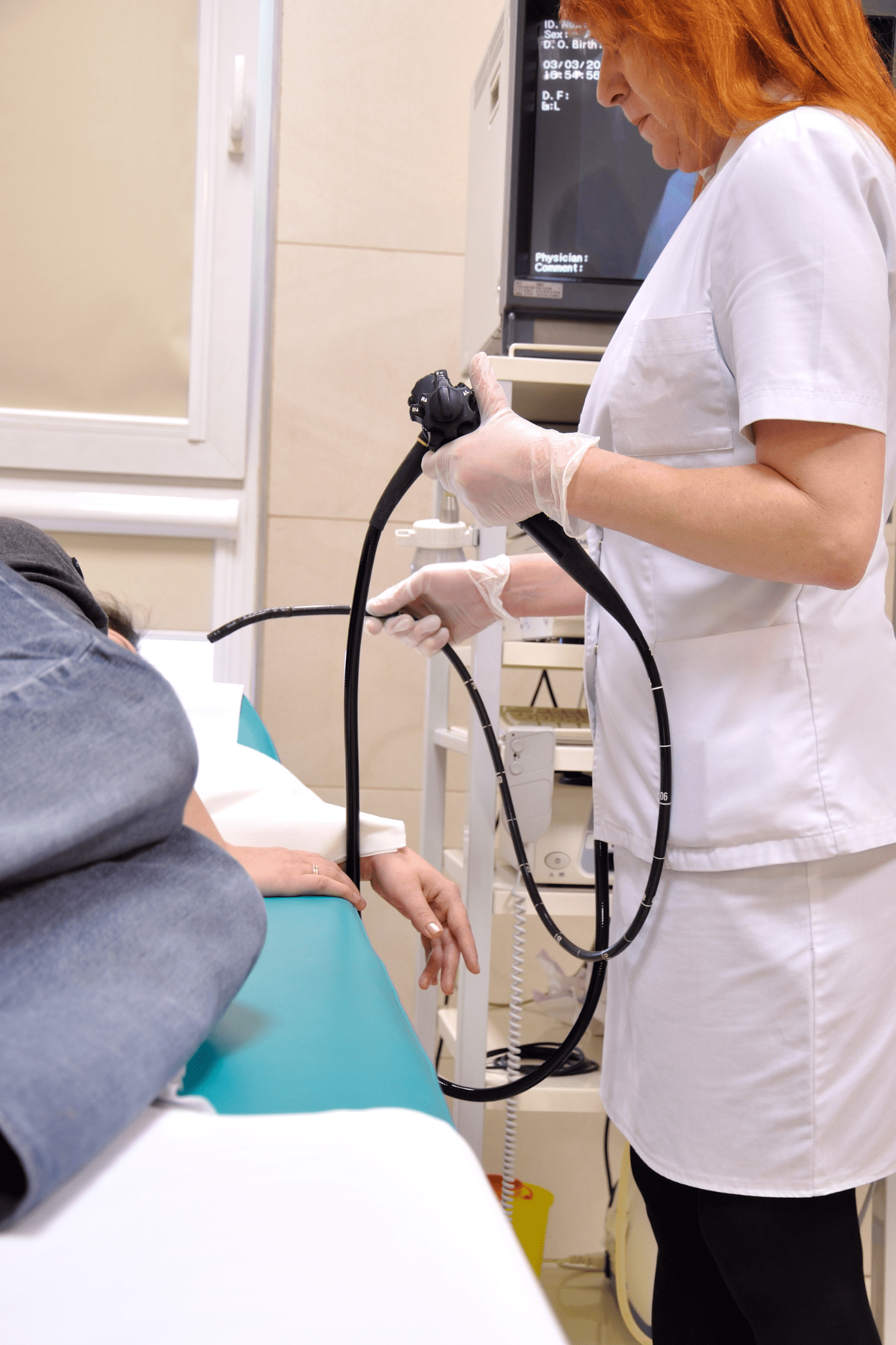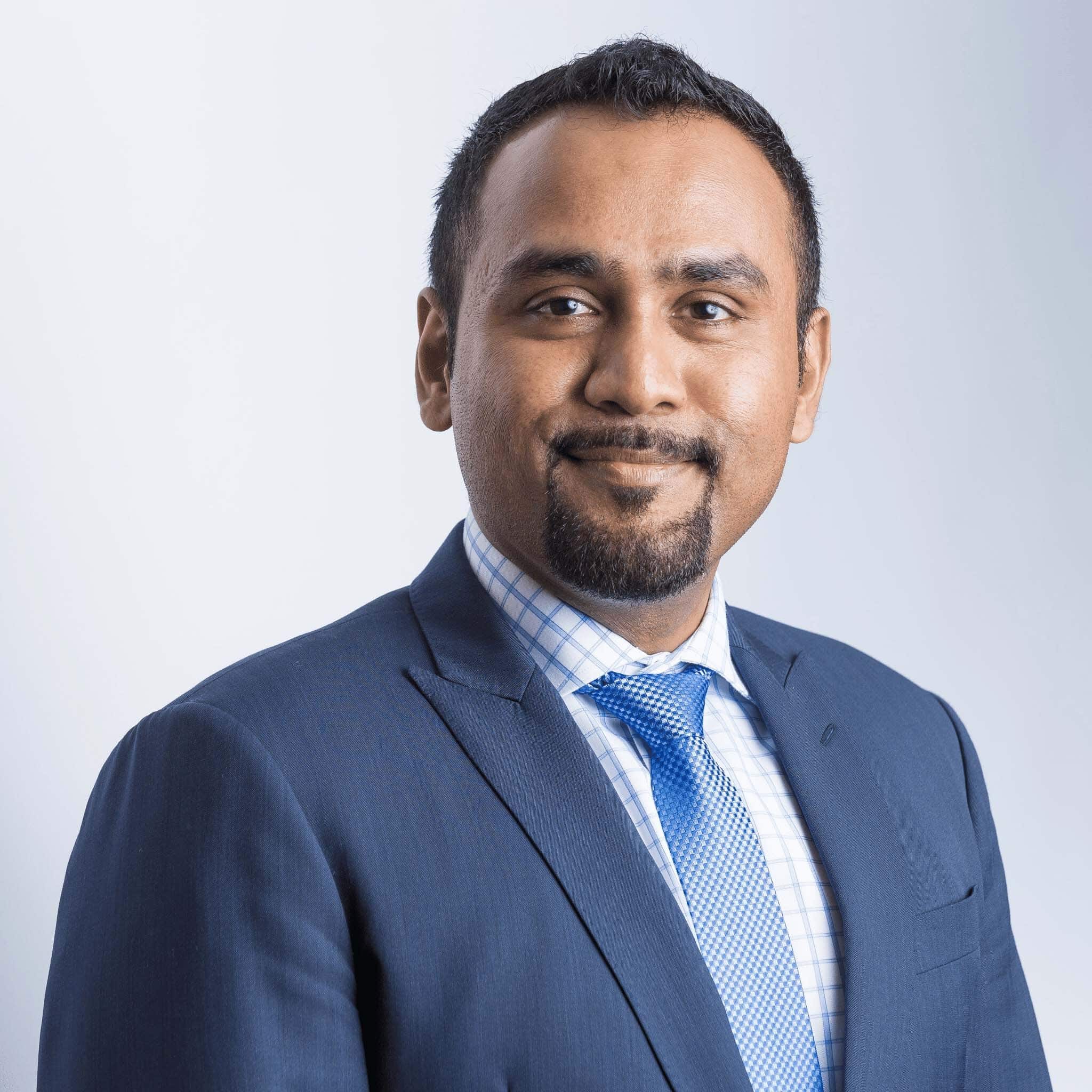Dysphagia or difficulty swallowing is a symptom of several different gastrointestinal conditions.
It can occur in any of the three phases of swallowing; oral, pharyngeal, or oesophageal.
Treatment for swallowing issues often varies depending on the cause of the issue.
One of the most common methods of diagnosing the cause of swallowing difficulties, particularly oesophageal, is through an endoscopy for dysphagia.
What is an upper gastrointestinal endoscopy?
It involves checking the upper digestive tract and identifying where the swallowing difficulties are stemming from.
It involves inserting a scope (a narrow flexible tube with a light and small video camera) into the digestive tract through the mouth to view the inside of the oesophagus. The scope also allows doctors to view the stomach and the first part of the small intestine.
An endoscopy facilitates a direct view of the digestive system and biopsies (taking tissue samples) and can be more accurate than X-rays in diagnosis.
This procedure can also be used to treat certain conditions, such as if a polyp, tumour, or swallowed object has to be removed to stretch a narrowed digestive tract or to control upper digestive tract bleeding.
What can an endoscopy for dysphagia diagnose?
It can reveal several potential causes of swallowing problems, including:
- Acid reflux or GORD (gastroesophageal reflux disease): Otherwise known as acid reflux disease, it can cause scar tissue to form in your oesophagus
- Epiglottitis: Characterised by inflamed tissue in the epiglottis:
Esophagitis: The inflammation of the oesophagus (this can be caused by acid reflux or certain medications)
Oesophageal cancer: A malignant (cancerous) tumour forms in the lining of the oesophagus, which can obstruct food as it goes through the oesophagus and cause painful swallowing
Physical obstruction: If something is stuck in your oesophagus, it can make it difficult to swallow
Herpes esophagitis: Caused by the herpes simplex virus type 1 (HSV-1) and can cause chest pain and difficulty swallowing

While an endoscopy for dysphagia can diagnose a wide range of conditions, it’s not the only option for diagnosing certain conditions.
Your doctor may opt for alternative methods if appropriate, considering your symptoms and medical history.
Potential risks or complications
An upper gastrointestinal endoscopy is a relatively low-risk procedure with very few potential complications.

Complications that could arise include:
Allergic reactions to the sedative given for the procedure
Digestive tract bleeding (your risk of bleeding complications is higher if the procedure involves taking a biopsy for testing)
Infection: Most infections are minor and can easily be treated with antibiotics. If you’re at a higher risk of infection, your doctor may provide preventative antibiotics before your procedure
Tear or perforation of the digestive tract lining: The risk of this complication is very low as this is estimated to occur in an estimated 1 of every 2,500-11,000 upper endoscopies
It’s normal to have a day or two of throat irritation or bloating following the procedure, but you should call your doctor if you experience anything worse, such as chronic coughing, vomiting blood, fever, rectal bleeding, or severe pain in the throat, chest, or stomach.
Consult a gastrointestinal specialist for colon cancer screening
Dr Suhirdan Vivekanandarajah is a Sydney-based gastroenterologist and hepatologist.
His extensive knowledge of the gastrointestinal tract can help in diagnosing the cause of your dysphagia.
Schedule a consultation with him today to determine whether you’ll need an endoscopy for dysphagia.
It’s normal to have a day or two of throat irritation or bloating following the procedure, but you should call your er, rectal bleeding, or severe pain in the throat, chest, or stomach.
Dysphagia or difficulty swallowing is a symptom of several different gastrointestinal conditions.
It can occur in any of the three phases of swallowing; oral, pharyngeal, or oesophageal.
Treatment for swallowing issues often varies depending on the cause of the issue.
One of the most common methods of diagnosing the cause of swallowing difficulties, particularly oesophageal, is through an endoscopy for dysphagia.
What is an upper gastrointestinal endoscopy?
It involves checking the upper digestive tract and identifying where the swallowing difficulties are stemming from.
It involves inserting a scope (a narrow flexible tube with a light and small video camera) into the digestive tract through the mouth to view the inside of the oesophagus. The scope also allows doctors to view the stomach and the first part of the small intestine.
An endoscopy facilitates a direct view of the digestive system and biopsies (taking tissue samples) and can be more accurate than X-rays in diagnosis.
This procedure can also be used to treat certain conditions, such as if a polyp, tumour, or swallowed object has to be removed to stretch a narrowed digestive tract or to control upper digestive tract bleeding.
What can an endoscopy for dysphagia diagnose?
It can reveal several potential causes of swallowing problems, including:
- Acid reflux or GORD (gastroesophageal reflux disease): Otherwise known as acid reflux disease, it can cause scar tissue to form in your oesophagus
- Epiglottitis: Characterised by inflamed tissue in the epiglottis:
Esophagitis: The inflammation of the oesophagus (this can be caused by acid reflux or certain medications)
Oesophageal cancer: A malignant (cancerous) tumour forms in the lining of the oesophagus, which can obstruct food as it goes through the oesophagus and cause painful swallowing
Physical obstruction: If something is stuck in your oesophagus, it can make it difficult to swallow
Herpes esophagitis: Caused by the herpes simplex virus type 1 (HSV-1) and can cause chest pain and difficulty swallowing

While an endoscopy for dysphagia can diagnose a wide range of conditions, it’s not the only option for diagnosing certain conditions.
Your doctor may opt for alternative methods if appropriate, considering your symptoms and medical history.
Potential risks or complications
An upper gastrointestinal endoscopy is a relatively low-risk procedure with very few potential complications.

Complications that could arise include:
Allergic reactions to the sedative given for the procedure
Digestive tract bleeding (your risk of bleeding complications is higher if the procedure involves taking a biopsy for testing)
Infection: Most infections are minor and can easily be treated with antibiotics. If you’re at a higher risk of infection, your doctor may provide preventative antibiotics before your procedure
Tear or perforation of the digestive tract lining: The risk of this complication is very low as this is estimated to occur in an estimated 1 of every 2,500-11,000 upper endoscopies
It’s normal to have a day or two of throat irritation or bloating following the procedure, but you should call your doctor if you experience anything worse, such as chronic coughing, vomiting blood, fever, rectal bleeding, or severe pain in the throat, chest, or stomach.
Consult a gastrointestinal specialist for colon cancer screening
Dr Suhirdan Vivekanandarajah is a Sydney-based gastroenterologist and hepatologist.
His extensive knowledge of the gastrointestinal tract can help in diagnosing the cause of your dysphagia.
Schedule a consultation with him today to determine whether you’ll need an endoscopy for dysphagia.
It’s normal to have a day or two of throat irritation or bloating following the procedure, but you should call your er, rectal bleeding, or severe pain in the throat, chest, or stomach.
Dysphagia or difficulty swallowing is a symptom of several different gastrointestinal conditions.
It can occur in any of the three phases of swallowing; oral, pharyngeal, or oesophageal.
Treatment for swallowing issues often varies depending on the cause of the issue.
One of the most common methods of diagnosing the cause of swallowing difficulties, particularly oesophageal, is through an endoscopy for dysphagia.
What is an upper gastrointestinal endoscopy?
It involves checking the upper digestive tract and identifying where the swallowing difficulties are stemming from.
It involves inserting a scope (a narrow flexible tube with a light and small video camera) into the digestive tract through the mouth to view the inside of the oesophagus. The scope also allows doctors to view the stomach and the first part of the small intestine.
An endoscopy facilitates a direct view of the digestive system and biopsies (taking tissue samples) and can be more accurate than X-rays in diagnosis.
This procedure can also be used to treat certain conditions, such as if a polyp, tumour, or swallowed object has to be removed to stretch a narrowed digestive tract or to control upper digestive tract bleeding.
What can an endoscopy for dysphagia diagnose?
It can reveal several potential causes of swallowing problems, including:
- Acid reflux or GORD (gastroesophageal reflux disease): Otherwise known as acid reflux disease, it can cause scar tissue to form in your oesophagus
- Epiglottitis: Characterised by inflamed tissue in the epiglottis:
Esophagitis: The inflammation of the oesophagus (this can be caused by acid reflux or certain medications)
Oesophageal cancer: A malignant (cancerous) tumour forms in the lining of the oesophagus, which can obstruct food as it goes through the oesophagus and cause painful swallowing
Physical obstruction: If something is stuck in your oesophagus, it can make it difficult to swallow
Herpes esophagitis: Caused by the herpes simplex virus type 1 (HSV-1) and can cause chest pain and difficulty swallowing

While an endoscopy for dysphagia can diagnose a wide range of conditions, it’s not the only option for diagnosing certain conditions.
Your doctor may opt for alternative methods if appropriate, considering your symptoms and medical history.
Potential risks or complications
An upper gastrointestinal endoscopy is a relatively low-risk procedure with very few potential complications.

Complications that could arise include:
Allergic reactions to the sedative given for the procedure
Digestive tract bleeding (your risk of bleeding complications is higher if the procedure involves taking a biopsy for testing)
Infection: Most infections are minor and can easily be treated with antibiotics. If you’re at a higher risk of infection, your doctor may provide preventative antibiotics before your procedure
Tear or perforation of the digestive tract lining: The risk of this complication is very low as this is estimated to occur in an estimated 1 of every 2,500-11,000 upper endoscopies
It’s normal to have a day or two of throat irritation or bloating following the procedure, but you should call your doctor if you experience anything worse, such as chronic coughing, vomiting blood, fever, rectal bleeding, or severe pain in the throat, chest, or stomach.
Consult a gastrointestinal specialist for colon cancer screening
Dr Suhirdan Vivekanandarajah is a Sydney-based gastroenterologist and hepatologist.
His extensive knowledge of the gastrointestinal tract can help in diagnosing the cause of your dysphagia.
Schedule a consultation with him today to determine whether you’ll need an endoscopy for dysphagia.
It’s normal to have a day or two of throat irritation or bloating following the procedure, but you should call your er, rectal bleeding, or severe pain in the throat, chest, or stomach.
Consult a gastrointestinal specialist for a panendoscopy procedure in Sydney
Dr Suhirdan Vivekanandarajah is a leading gastroenterologist and hepatologist based in Sydney. He specialises in diagnosing and treating gastrointestinal conditions
Schedule a consultation with Dr Suhirdan if you’re experiencing gastrointestinal issues.
